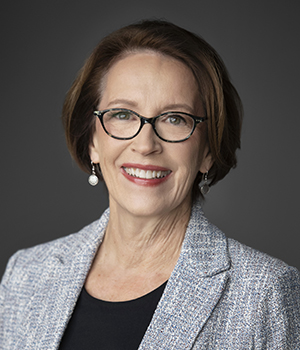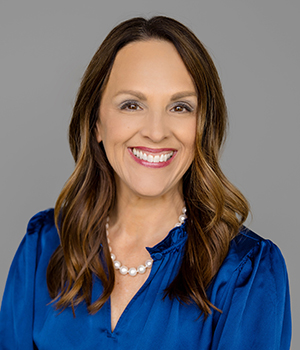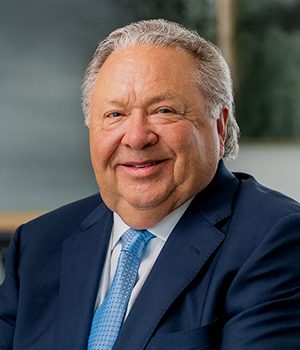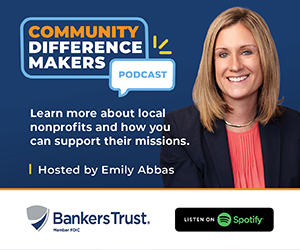On Leadership: How to Move Fast Without Breaking Your Business
Balancing urgency with endurance in an age of disruption

Suzanna de Baca Oct 24, 2025 | 6:00 am
7 min read time
1,558 wordsAll Latest News, On Leadership, OpinionDisruption is no longer a distant threat. It is here, transforming industries faster than most leaders can adapt. For the MBA class I teach on leading through disruption, I recently spoke with a top executive working at the intersection of agriculture and manufacturing, sectors that have been upended by tariffs, shifting trade agreements, and supply chain volatility. In her company’s world, there is no waiting for stability; decisions must be made in real time, often with incomplete information. Yet moving fast cannot mean breaking the company or burning people out. Our conversation underscored that how to drive speed and agility while still leading with discipline, care and endurance is now a central challenge for modern leaders.
Research shows that moving fast without breaking your company or your people is possible, but there is no single formula for doing it. Success depends on how each organization structures, communicates and adapts to turn speed into sustainable progress.
One way to think about this comes from the Harvard Business Review article, “Leaders Can Move Fast and Fix Things.” Authors Frances Frei and Anne Morriss argue that moving fast does not have to mean breaking things. It can mean fixing them. Leaders, they say, must first diagnose the right problem. Often, leaders rush to solve what is most visible, but true speed comes from fixing the root cause, not just the symptoms. Equally important is trust. Frei and Morriss describe trust as a leader’s operating system, built from logic, authenticity and empathy. When trust is strong, people will follow even bold, rapid shifts. They also emphasize involving outsiders in decision-making, those stakeholders who are most affected but often least consulted. Finally, they highlight the power of storytelling, employing a simple, clear narrative that helps people understand why speed matters and where it is headed.
A second perspective, outlined in a MIT Sloan Management Review article called “10 Strategies for Leading in Uncertain Times,” focuses on leadership in times of uncertainty. Their argument is that disruption is no longer the exception, but the rule. Leaders cannot eliminate uncertainty, but they can help their organizations build resilience and adaptability. Instead of predicting the future, they recommend cultivating structures that can absorb shocks, such as diversified supply chains, modular systems and buffers. Leaders can also reframe decisions as experiments, which lowers the stakes and prevents paralysis. They stress the importance of medium term goals, such as 90-day horizons, which give employees something tangible to hold onto in chaotic environments. Communication becomes crucial. Leaders must speak before silence breeds fear, use inclusive language, and treat each person’s needs with empathy. In this framing, speed is not about rushing but about keeping the organization moving forward with confidence, clarity and rhythm in the midst of volatility.
A third view appears in Tobias Fredberg and Johanna E. Pregmark’s paper “Organizational transformation: Handling the double-edged sword of urgency,” published in Science Direct’s Long Range Planning which looks specifically at the role of urgency. Urgency can energize an organization, but it can also backfire by creating fear and a narrow focus on efficiency rather than innovation. Their research shows that leaders must manage three tensions simultaneously. First, they must reframe success and failure. Ambitious goals can spark creativity if framed aspirationally, not punitively. Second, they must pair accountability with psychological safety, so people feel free to take risks even while under pressure. Third, they must link urgent short term actions with long term strategic goals, ensuring that speed today does not derail tomorrow’s vision. In practice, they found that creating special cross functional initiatives, small microcosms of innovation, allowed organizations to turn urgency into a source of creativity rather than constraint.
The various approaches of building trust through storytelling, strengthening resilience and balancing urgency with creativity show that there are numerous ways to move fast in times of disruption. What matters is combining these approaches with focus, empathy and adaptability so that leaders can act quickly while turning turbulence into lasting momentum for change.
I turned to leaders for insights on how to move fast while building strength and creating positive, lasting impact.

Connie Boesen, mayor, City of Des Moines
Disruptions can happen at any time, and the city must be prepared for them. Even in disruptions, there is a necessity to keep the city operating and serving our residents to the best of our capacity. I find it highly important to act on information rather than emotion and not act in a manner that can feed into chaos. Be open and honest with what is going on by acknowledging the issue, getting all the facts together and collaborating with staff to build a better understanding. Taking action in a prompt yet well-informed manner allows us to continue necessary daily operations as public servants while also addressing an issue that is significant to the residents of Des Moines.

Debi Durham, director, Iowa Economic Development Authority and Iowa Finance Authority
My leadership style is about empowering people and investing in them so the work we do carries on. There’s a quote on the white board in my office: “A good leader inspires people to have confidence in their leadership; a great leader inspires people to have confidence in themselves.” I have served as IEDA Director since 2011 and have seen my share of reorganization, having brought together IEDA and the Iowa Finance Authority in 2019 and having transitioned various programs. Working together to solve challenges and seize new opportunities motivates me. Our people have turned out incredible work while evolving as a team, even through the uncertainty of the COVID-19 pandemic. We pursue bold ideas, measure everything we do and make changes if needed. When you have the right people in the right positions, they excel and so does the organization. To me, there’s nothing more exciting than that.

Rachelle K. Keck, Ph.D., J.D., president, Grand View University
In times of disruption, I’ve learned that speed without clarity creates chaos. Transparent urgency is vital in those moments — moving decisively while ensuring your team understands the why behind each decision.
While every situation is different, I typically establish a small, empowered team to bolster communication channels, prevent bottlenecks and maintain accountability. Equally important, frequent communication with the broader organization is critical. Even when we don’t yet have all the answers, I share what we know, what we’re considering, and how decisions will be made.
Having all the answers isn’t required to build trust; it’s built through honesty about uncertainty and competence in navigation. People can handle difficult pivots if they understand the reasoning and see consistent values guiding the process. Speed paired with logic and transparency can turn disruption into an opportunity to deepen, rather than dampen, organizational trust.

Laura D’Oria, Ph.D., associate professor and associate chair of the Management and Entrepreneurship Department, Ivy College of Business, Iowa State University
Speed without chaos requires three interconnected practices. First, analyze and prioritize ruthlessly – understand the value of multiple change initiatives as well as the cumulative emotional and intellectual burden they place on the organization. Armed with that knowledge, prioritize. Second, engage in sensegiving to create alignment – help people understand how disruption connects to core organizational values. Alignment with core values can reduce resistance by allowing stakeholders to see change as building on rather than abandoning values. Third, distribute leadership across the hierarchy – empower managers at all levels as change agents, not just implementers. A distributed approach enables rapid, coordinated action without bottlenecks while building trust necessary for sustainable transformation. These practices share a common foundation: leaders must listen – deeply and continuously – to understand how change is experienced across the organization. Speed and stability aren’t opposing forces when you prioritize strategically, anchor to values, distribute leadership, and listen authentically.

Nancy Mwirotsi, founder and executive director, Pi515
The best leaders slow down just long enough to ask the right questions, listen deeply and bring people along the journey. They pair urgency with intentionality. It’s not just about speed. It’s about direction. I call it cautious adaptability: the ability to learn, unlearn and relearn while staying grounded in values. When people understand the ‘why’ behind rapid change, they’re more willing to experiment and recover from mistakes. Sustainable speed comes from clarity, communication and trust, not adrenaline. Curiosity keeps teams creative; transparency keeps them calm. Using disruption as a catalyst, leaders build cultures that can flex without fracturing.”

Rick Tollackson, CEO, Hubbell Realty Company, and author
Disruption is inevitable, but it’s also the spark for transformation. The key is maintaining an entrepreneurial mindset: When change hits, ask not just what happened, but how can we use this? At Hubbell, many of our strongest divisions were born from disruption because we viewed each challenge as a chance to evolve and seize the opportunity that the disruptions may have created.
Moving quickly doesn’t mean acting impulsively – it means responding with purpose. We assess whether it’s minor or transformative, stay grounded in our core principles and avoid knee-jerk reactions that fracture trust. Sometimes disruption requires a pivot; other times, it demands the courage to stay the course and own the outcome. True leadership in uncertain times lies in balancing urgency with steadiness. Every disruption is an opportunity.
This winter, Rick Tollakson will release his first book, “Think Bigger, Lead Better,” outlining his “Eight to Great” framework for effective, culture-driven leadership.

Suzanna de Baca
Suzanna de Baca is a columnist for Business Record, CEO of Story Board Advisors and former CEO of BPC. Story Board Advisors provides strategic guidance and coaching for CEOs, boards of directors and family businesses. You can reach Suzanna at sdebaca@storyboardadvisors.com and follow her writing on leadership at: https://suzannadebacacoach.substack.com.









